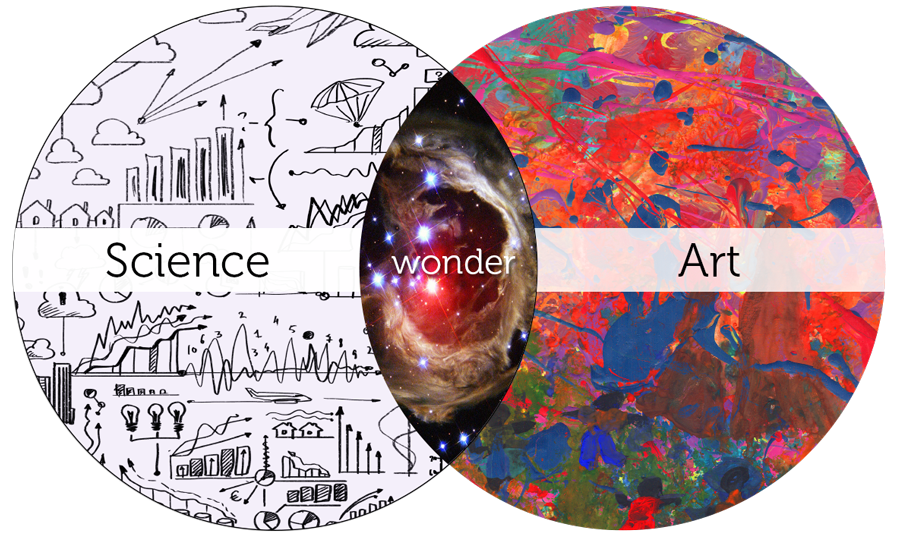The idea of art and science as “two cultures,” two disparate
worlds, is neither new nor uncommon. As described by C.P. Snow, the two, exemplified
by literary intellectuals at one end and scientists at the other, are separated
by a “gulf of incomprehension” (Snow 4). The failure of both intellectual spheres
to recognize and understand each other hampers the progress of knowledge and
society as a whole.
 |
| Aerial view of UCLA campus http://newsroom.ucla.edu/file?fid=52e76fe8f6091d782f0008cd |
 |
| An artistic representation of genetic engineering https://fineartamerica.com/featured/genetic-engineering-leon-zernitsky.html?product=art-print |
This is where the idea of “the third culture” arises. I
agree with Kevin Kelly’s view that “computers had a lot to do with it” (Kelly
992). The rise of technology advanced not only the boundaries of art and
science themselves, but also their abilities to connect to each other. As John
Brockman describes, this third culture involves communication between scientists
and the general public (Graham-Rowe). This crosstalk is made possible by the prevalence
and universality of technology, which also paves the way for interactions
beyond this two-way exchange, allowing for a “triangular bridge” between art,
science, and technology (Vesna 121). I identify particularly with Stephen
Wilson’s analysis of genetic engineering as an example of a future area for
this third culture to bridge (Wilson 3). As a researcher in genetic engineering
myself, I appreciate how closely art, science, and technology interplay with
each other, through construct design, biological models, and data analysis, to
name just a few examples. As I continue in my career as a scientist, I hope to
carry this newfound perspective with me, bringing together these two cultures
to build the new bridge forward.
 |
| Bridging art and science: wonder https://www.on24.com/wp-content/uploads/2015/06/art-science-1.png |
References
Kelly, Kevin. “The Third Culture.” Science, vol. 279, no. 5353, 13 Feb. 1998, pp. 992-993.
Graham-Rowe, Duncan. “John Brockman: Matchmaking with science and art.” Wired, 3 Feb. 2011.
Snow, C.P. The Two Cultures and the Scientific Revolution. New York, Cambridge University Press, 1961.
Vesna, Victoria. “Toward a Third Culture: Being in between.” Leonardo, vol. 34, no. 2, 2001, pp. 121-125.
Wilson, Stephen. “Myths and Confusions in Thinking about Art/Science/Technology.” College Art Association Meetings, 2000.
That is a very interesting point you make about how the divide between art and science is subconscious. It's fascinating how something as subtle as the geographic layout of the buildings can perpetuate this separation between art and science at UCLA. I agree with you that technology can potentially bridge the gap, and connect art with science. It will definitely be interesting to see how as technology develops, the ways that art and science interact will potentially change, in addition to the general public's perception of art and science.
ReplyDeleteLevina, I enjoy reading your blogs. You explain the concepts clearly. And I appreciate your honest that you rarely step feet in the north campus. I personally am a science person as well and I find your words very true about how the "southerners" feel. As you said, hope you can carry this new idea of collaboration of art and science on your road and have a delightful future!
ReplyDelete